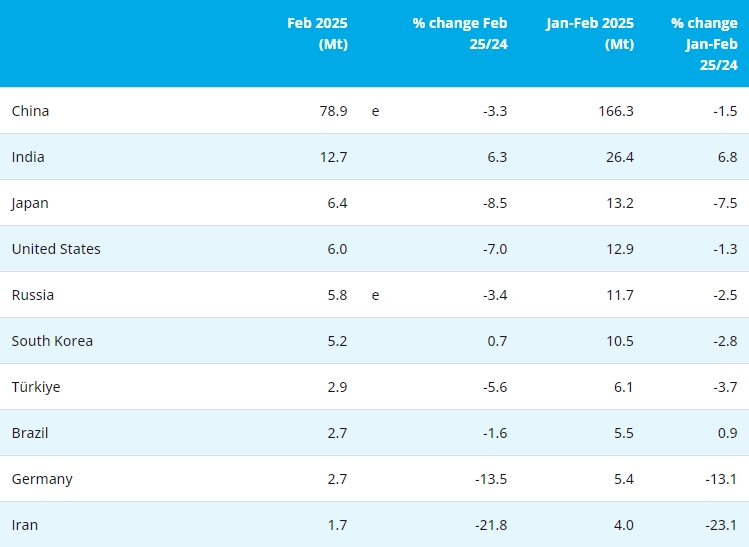[ferro-alloys.com] There was a new awareness across Africa that old-style colonial mining was unacceptable on the continent, African National Congress (ANC) MP Ben Turok said on Thursday.
Turok, who was addressing the MetalBulletin Events sixth South African ferroalloys conference on mineral beneficiation and its implications for the future of mining, said this had been confirmed at two recent Ministerial conferences he attended in Addis Ababa and Abidjan.
The ANC MP, who is part of a pan-African analysis of mining study and a consultant to the United Nations Economic Commission for Africa (Uneca), said that at both recent African conferences, Ministers from mineral-rich countries objected to current mining practices and the absence of local value addition.
Although beneficiation was increasingly on agendas in South Africa, it still needed to be properly unpacked and the mining industry needed a closer connection to the rest of the economy.
It was wise to leverage off a country’s natural resources at a time of global economic turbulence.
It was time that the private sector also began saying that it was in the national interest to give a great deal of attention to the maximisation of the benefits of South Africa's multitrillion-dollar mineral resource base.
The mining industry had neglected to take account of South African law stating unequivocally that the minerals beneath the soil belonged to the people as a whole and not to the companies that mined them.
The time had come for a careful examination of what the private sector and government did with the property of the people as a whole, to pre-empt alternative views, which could be disastrous for the economy.
The South African government was in the process of making it easier for mining companies to export, but in exchange it wanted them to beneficiate domestically, which involved helping to build manufacturing activity, technological know-how and skills.
“Africa is going that route,” Turok said, adding that the African Mining Vision document had been adopted, as had Uneca's Economic Report for Africa of 2013.
Needed was a scientific analysis of the mineral value chain, from exploration, extraction and processing and extending to beneficiation, fabrication and marketing.
Each of the six elements had important input, lateral and forward linkages.
Conference chairperson Kevin Fowkes, a UK alloy consultant, at question time cited power prices as the reason why beneficiation in South Africa’s ferrochrome industry was disintegrating and queried how more beneficiation could take place without electricity.
Turok said South Africa’s Reconstruction and Development Programme had accommodated energy as a key element of its development plans but that the International Monetary Fund and the World Bank had forced South Africa into a structural adjustment programme under the name of Gear.
“This turned everything upside down, and instead of spending on infrastructure, we cut back,” he said.
The structural adjustment programme reversed South Africa’s development trajectory, which led to the present energy impasse.
“The whole of Asia resisted the imposition of structural adjustment but we became too willing to comply with the Bretton Woods institutions and that had a tremendous effect,” he added.
The ferrochrome conference re-emphasised the unravelling of South Africa’s once-mighty ferrochrome industry because of the electricity shortage and consequently high cost.
Only two years ago, South Africa’s mature chrome value chain provided over 200 000 jobs and contributed R42-billion in gross domestic product (GDP) a year.
With 82% of world chrome ore reserves if upper group two chrome is included, 47% of chrome ore production and 42% of ferrochrome production, South Africa was for years at the pre-eminent position globally in ferrochrome.
However, its rapid decline is seeing China take over and South Africa become a mere exporter of raw chrome ore, something it eschewed only a few years back and which flies in the face of the current promotion of beneficiation.
South Africa’s world-class ferrochrome manufacturing facilities, which have state-of-the-art technology, are currently underutilised, while China’s carbon dioxide-belching, outdated ferrochome manufacturing facilities are in full swing.
The erosion of the profit margin of South African producers has been exacerbated by rampant increases in costs, led by electricity, which represents 22% of total costs.
At stake are up to 80 000 jobs in South African ferrochrome smelters, a near halving of ferrochrome’s contribution to gross domestic product.
What needs to be done is for a competitive environment to be fostered for beneficiation and for the balancing of beneficiation with the strategic export of raw chrome to be realised.
As things stand, the opposite is rolling out with South Africa slumping back to the prospect of having to be content with the export of raw ore in an industry where the beneficiation that the country had firmly
Copyright © 2013 Ferro-Alloys.Com. All Rights Reserved. Without permission, any unit and individual shall not copy or reprint!
- [Editor:editor]



 Save
Save Print
Print Daily News
Daily News Research
Research Magazine
Magazine Company Database
Company Database Customized Database
Customized Database Conferences
Conferences Advertisement
Advertisement Trade
Trade




 Online inquiry
Online inquiry Contact
Contact

Tell Us What You Think